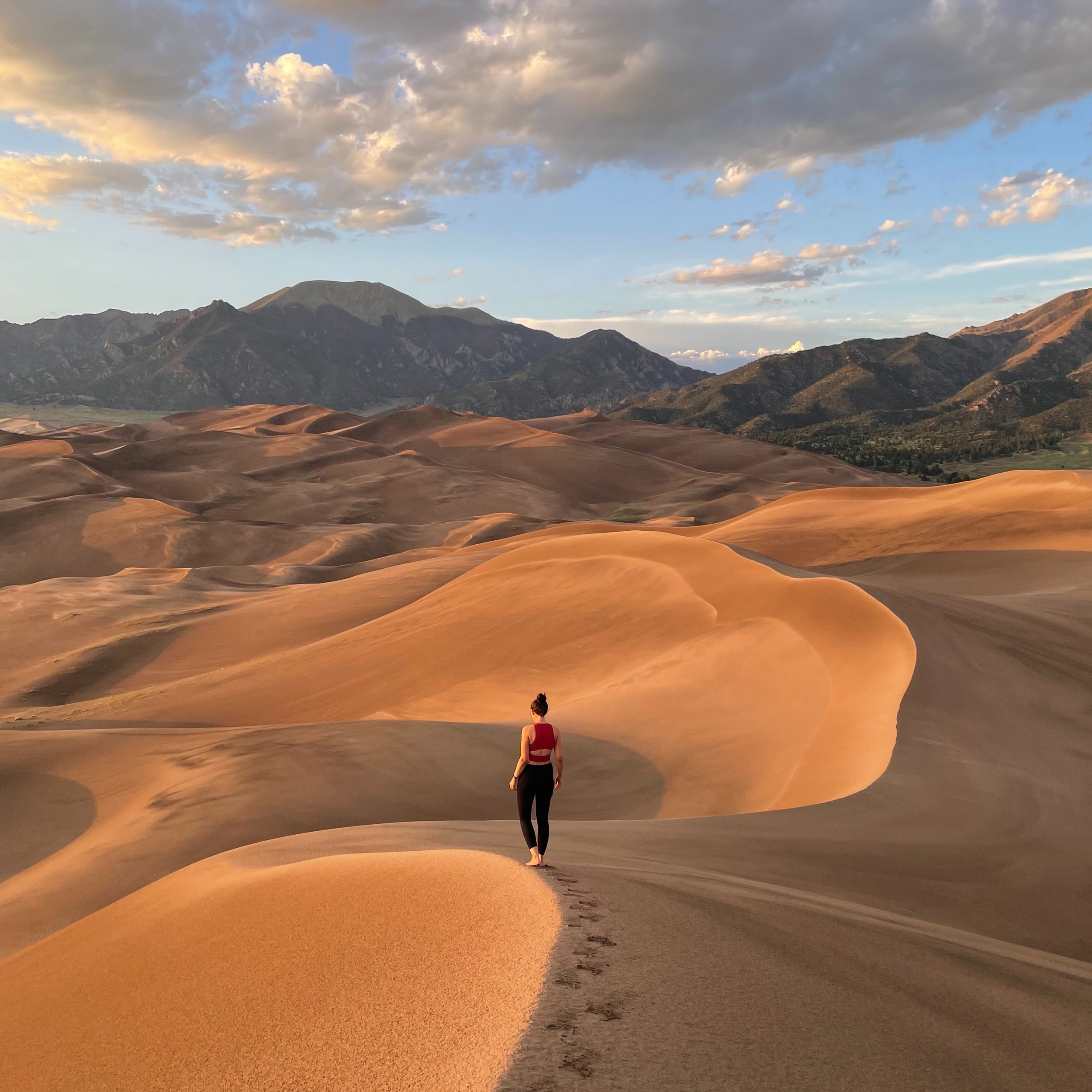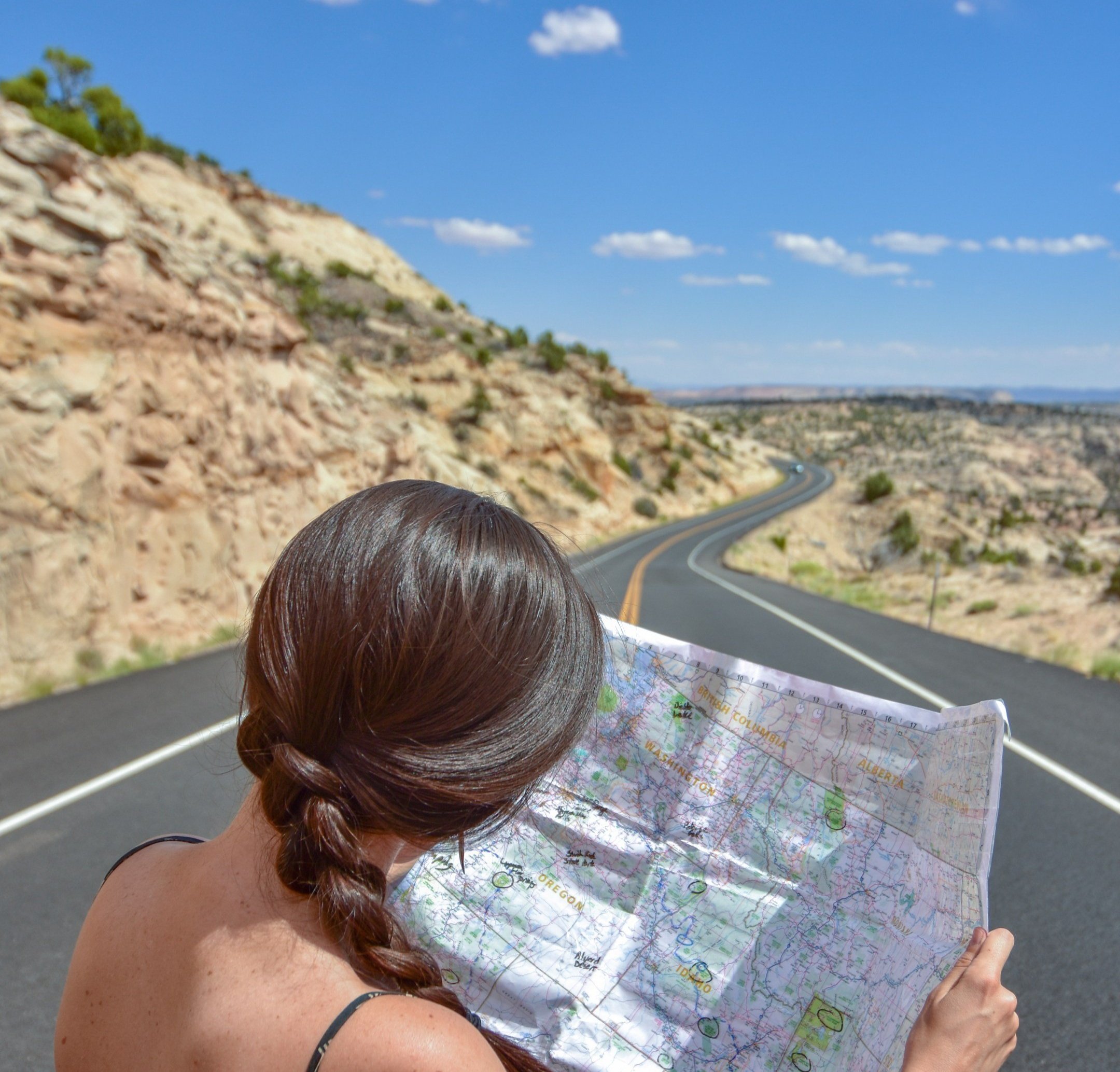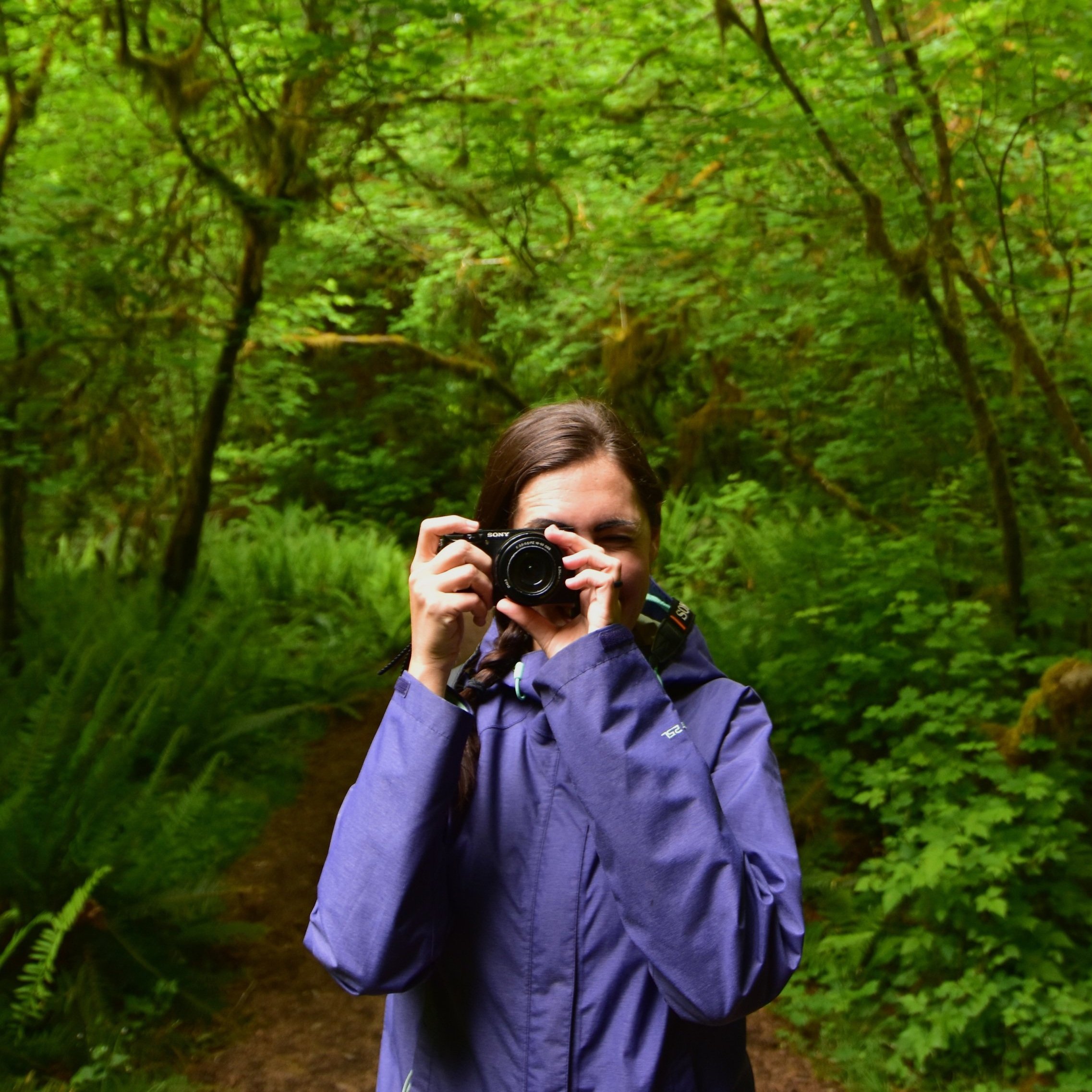101 Responsible Tourism Tips
Responsible tourism means traveling with an awareness of the impact you have on the places you visit.
Who does your money support? How does your vacation impact the environment? What effects do tourists have on the local community? Even small choices, repeated by millions of visitors over years of travel, can have big implications.
Here are 101 tips to help you travel responsibly – from the moment you start planning until you’re posting pictures after you get home. Pick one, or ten (or more!) to implement on your next trip. Every little bit counts!
Before You Go
A few easy changes before you ever leave home can make a big difference.
1. Learn about your destination before you go by setting a news alert for the country, or reading a book by a local author.
2. Do your research. Honestly, it can be as easy as googling “responsible tourism in A” or “ethical travel in B”.
3. Follow travel blogs that promote responsible tourism (Hi there, you’re already doing this one!). Get lots more recommendations from our ethical travel resource.
4. Ask to see your tour company’s policy for responsible tourism (check out this one from Urban Adventures). Even if they don’t have one, you’ve put them on notice that they should.
5. Learn a few words of the local language. Even if it’s just “Hello”, “Thank you”, and “My name is”, it shows that you made the effort.
6. When you leave home, unplug your appliances and turn off your heat or air conditioning. (Save money on your energy bill and help the planet!)
7. Use an e-ticket and organize your itinerary with apps like Google Trips to save trees.
8. Remove all excess packaging when you’re packing. Many places don’t have great waste disposal systems or recycling, so leave your trash at home.
9. Carry a water bottle like Hydro Flask. (Aaron can’t live without his morning coffee, so he packs a reusable coffee cup, too.)
10. If you’re traveling to place without potable tap water, invest in a sterilizing straw rather than buying bottled water.
11. Just say no to single-use straws! If you need straw for sipping your coffee on the go, pack a reusable one like FinalStraw. Did you know that Americans use (and throw away) 500 million plastic straws EVERY DAY?
12. Pack a small reusable bag for grocery and souvenir shopping so you don’t need single-use plastic bags. (This is the one we use – it packs up super small and it’s waterproof!)
13. Grab a set of reusable utensils so you’ll never have to throw away plastic ones again! Mine stay in my purse 24/7.
14. Bring reusable to-go containers for leftover food. (We love these collapsible ones that pack flat.) We also have reusable ziplock bags, but you can always just wash and re-use your regular old ziplocks – they’re good for way more than one use!
15. Bring your own toiletries in carry-on friendly containers.
16. Pack a menstrual cup (You can use up to 12,000 disposable period products in your lifetime – that’s a lot of trash in the landfill.)
17. Search for sustainably managed accommodations. Check out our Plan Your Trip page for places to start. Favor local, independently-run hotels over big international chains.
18. If you’re booking with Airbnb, have a conversation with the host first to make sure they’re not contributing to the negative effects of short-term tourist rentals.
19. Or try a homestay so your tourist dollars directly support a local family!
20. Fly less. Air travel accounts for a huge chunk of most travelers’ carbon footprints. Every round-trip trans-Atlantic flight emits enough CO2 to melt 30 square feet of Arctic sea ice.
We fell in love with road tripping once we got used to the idea that we didn’t need to fly for every vacation.
21. If you need to fly, choose nonstop flights. Planes use the most energy during takeoff and landing, so the more stops you make, the more fuel you waste.
22. Book flights with airlines that are striving for sustainability.
23. Pack less. Every extra pound contributes to the overall weight of the plane, train, or automobile – which means it burns more fuel and emits more CO2. I love my Tortuga travel backpack that magically fits what I need, carry-on only.
24. Bring a snack for the flight – there’s SO much plastic in those airplane meals. (Make sure to say no to the plastic cups, too – flight attendants will gladly fill up your water bottle!)
25. Plan a road trip instead of flying. Air travel only becomes more fuel efficient for longer distances (once you’re at cruising altitude, planes burn less fuel). So for shorter trips (especially if you’re traveling with friends), it’s better to drive.
26. Take a train journey – you’ll enjoy the scenery and cut down on your carbon footprint!
27. Pack ethical fashion that doesn’t rely on slave labor or materials that pollute the planet – like Outdoor Research for hiking or Encircled for versatile basics.
28. Try Pack for A Purpose to use a small amount of your luggage space to bring supplies needed by community projects at your destination.
29. Don’t buy all new gear just to travel. Yes, we suggested a lot of stuff to purchase, but don’t buy anything you don’t need. Got an old water bottle, thrift shop clothes you love, a free reusable shopping bag, and some Tupperware? You’re all set and nothing has to go in the landfill.
Responsible Tourism On the Ground
All the choices you make while you’re traveling make a difference – so be mindful of your impact on the place your visiting!
30. Turn your lights and air conditioning off when you leave your hotel to save energy.
31. Keep your bed linens and towels for more than a day. All that washing wastes a lot of water! (You don’t wash your sheets and towels every day at home, do you?)
32. Leave the “Do Not Disturb” sign on your door – even just for a day or two – to cut down on chemical cleaners.
33. Ask your hotel about their sustainability practices. Let them know you appreciate any efforts they’re making, or encourage them to do more.
34. Don’t use the hotel laundry. Usually each guest’s clothes are washed separately to make sure they don’t get mixed up, meaning lots of wasted water. We carry Dr. Bronners soap and hand wash our clothes in the sink. (In developing countries we seek out a local who will happily hand wash our laundry for a little extra cash.)
35. Use water sparingly. Keep those showers short – many places are suffering from drought.
36. Skip the single-use hotel toiletries.
37.Snap photos of maps and brochures instead of taking them to cut down on waste.
38. Walk or bike everywhere. Great for your body, great for the planet, great way to explore a new place!
Our Airbnb in Mexico provided bikes so we rode into town every day instead of driving!
39. Use public transport whenever possible.
40. Rent an electric or hybrid vehicle for longer jaunts.
41. Skip the cruise ship. Each day, a single cruise ship emits as much pollution as a million cars. Sail instead!
42. Use reef-safe sunscreen that doesn’t contribute to the destruction of threatened coral reefs. We use Raw Elements.
43. Get off the beaten path to help mitigate overtourism. Whether it’s choosing a rarely-visited country or just getting a few miles outside of major tourist hubs, take the pressure off places that are suffering from the impact of too many travelers.
44. For the same reason, travel in the off-season or visit popular places mid-week. It’s more fun to have them all to yourself anyway!
45. Don’t litter (duh).
46. For bonus points: Pick up other people’s litter! Take a beach walk or clean your campsite. Post the photo on social media and use the hashtags #adventurebag or #take3forthesea to encourage others to do the same.
47. Respect local customs for dress code. A quick Google search will be able to tell you if there are any general rules to follow in your destination. (I had no idea that it’s considered scandalous for women to show their thighs in east Africa, until my host let me know that even my modest shorts were a no-no.)
48. Think critically about cultural appropriation before trying out local dress.
49. Ask permission for photos. Just because you’re traveling doesn’t mean you’re on a tour the entire time. Locals are just living their lives and may not want to be a prop in your vacation pics. Strike up a conversation and introduce yourself like a human first!
50. Don’t take photos you wouldn’t take at home. Do you take pictures of strangers’ children in your hometown and post them on the internet? Then don’t do it abroad.
51. Follow the rules. Abide by keep out signs, stay on the correct side of fences, etc. You don’t own the place.
52. Tip appropriately. Don’t be stingy just because your flight there was expensive.
53. Bargain if it’s culturally appropriate, but don’t be a jerk about it. Keep the exchange rate in mind and if you’re haggling stubbornly over a buck or two, let it go.
54. Be respectful of locals. This is their home. (For example, if you’re driving slowly to enjoy the scenery, pull over so folks can get to work.) Be kind first and foremost, and act like a guest.
55. Slow down. Don’t treat every destination like something to check off your list. Stay in one place longer, and I promise you’ll have a deeper, more fulfilling experience.
56. Seek out tour companies that give back. Google “social impact travel in X” to get some ideas. (There are some good options on our Trip Planning page, too.)
57. Get off the resort. You traveled to experience a new place, right? So go experience it. Barricading yourself inside the walls of your all-inclusive resort doesn’t benefit you or the local community.
58. Eat at locally owned restaurants. Try authentic local cuisine and spend your tourist dollars at local businesses instead of boring chain restaurants.
59. If you’re cooking, buy local food. Transporting food is a big source of carbon emissions, plus you’ll be supporting local farmers.
60. Buy local souvenirs, not the mass-produced stuff at the airport gift shop. Ask questions to make sure they’re really made by local artisans! (Are you sensing a trend here? No matter the question, the answer is local.)
61. Talk to locals! Chat with your taxi driver, Airbnb host, waiter, you name it. Ask them for recommendations for places to eat and things to do that tourists often miss. You’ll probably make a friend!
62. Ask your hotel and/or tour operator how they support the local community. What percentage of the staff are locals? Are they in management positions?
63. Hire local guides. Try searching on Tours By Locals, Context Travel, or just ask your host to recommend someone they trust.
64. Even better, seek out tours by Indigenous guides. They know their land and communities better than anyone, and they can tell you their history without the filter of foreign voices. Our Navajo-led tour of Monument Valley with Navajo Spirit Tours is one of our all-time favorite experiences.
Our Navajo Spirit Tours guide, Larson, helped us have an incredible experience of Monument Valley in Arizona.
65. Acknowledge Native lands. When traveling on land that has been colonized or stolen from Indigenous people, make an effort to learn that history (we use the Native Land app as a jumping off point). Did you know that Native Americans were often forcibly relocated from their sacred lands to create National Parks? Here as some things to keep in mind when traveling on Native lands.
66. Support female entrepreneurs! Seek out women-owned businesses and female guides and drivers whenever possible. Studies have consistently shown that empowering women is one of the most effective ways to create positive change in poor communities (actually, I’m pretty sure that’s true for all communities). Check out these Feminist City Guides to find women-led businesses around the world.
67. Don’t give to begging children. We all want to help, but this only contributes to the cycle of poverty. (Here are seven reasons why it’s actually harmful to the kids you’re trying to help.)
68. If you really want to help impoverished kids, look into supporting local organizations that fight poverty and improve access to education.
69. Volunteering abroad is exploding in popularity. But before you consider it, ask yourself these important questions.
70. If you’re still interested in volunteering overseas, read Learning Service: The Essential Guide to Volunteering Abroad from cover to cover first. (You can check out an excerpt here.)
71. Think you’re ready to volunteer abroad? Ask any organization you’re considering working with the hard questions, too.
72. Don’t volunteer at orphanages (here’s why). Many kids in orphanages in developing countries aren’t actually orphans – they’re just being raised in orphanages because foreign volunteers will pay a lot of money to play with them for a week at a time. If we invested volunteer fees into programs to raise families out of poverty instead, these kids could be back home where they should be.
73. For more info on volunteering abroad, check out the “Voluntourism” section of our Ethical Travel Resource.
Responsible Animal Tourism
Wildlife is a huge draw for tourists, but it’s surprisingly easy to harm the very animals you came to see.
74. Don’t ride elephants, swim with captive dolphins, take selfies with tigers, or walk with lions. Seriously, just don’t. It’s never OK.
75. In fact, just skip any interaction with animals that treats them like props.
76. Do your research. Make sure “sanctuaries” aren’t just using that term to appease tourists.
77. Don’t try local dishes that include endangered animals. (Some aren’t so obvious, like civet coffee which is produced by captive civet cats).
78. If you’re visiting captive animals, make sure the sanctuary plans to release them back into the wild if at all possible. Skip animal “sanctuaries” with breeding programs, unless they’re truly conservation-oriented and breeding to preserve the species.
79. Keep your distance from wild animals, for your safety and theirs. (I once met a real woman who was upset that she didn’t get to pet the animals on her African safari. Don’t be that woman.)
80. Communicate with your guides about respecting wildlife. Driving off trails or chasing wild animals may get them a better tip with some tourists, but let them know that the safety of the flora and fauna is more important to you than getting as close as possible.
81. Don’t geotag photos of endangered species threatened by poachers. They watch social media and can use the data to close in on animals.
82. Be careful not to buy souvenirs made from endangered species, like ivory or turtle shell jewelry. Here’s how to know what’s OK to buy.
83. Don’t touch coral reefs! They’re extremely fragile and snorkelers touching and walking on them causes serious damage.
Wildlife is best enjoyed in the wild. I met this playful lion cub on the Rise of the Matriarch expedition in Namibia.
84. Leave starfish in the water. Starfish capture oxygen from the water to breathe – would you want to be held underwater for several minutes for a photoshoot?
85. Don’t feed wild animals (That includes chumming the water for sharks).
86. Seek out nonprofits & research facilities that truly support animals. Spend your money there instead of at exploitative tourist attractions.
87. Support local animal shelters & rescues. For example, the Maui Humane Society has a program that allows visitors to take a pup out of the shelter for a day of fun!
Responsible Tourism in the Outdoors (AKA, Leave No Trace)
We are huge fans of hiking and camping on public lands. However, increased traffic to these fragile places is causing real damage. Follow these simple rules to protect our wild places.
88. Plan ahead and prepare. Know what conditions to expect so that you can keep yourself and the land safe.
89. Stay on the trail – it’s there for a reason. No matter how tough the outdoors may seem, foot traffic can damage vegetation and organisms beyond recovery.
90. Be cautious with your campfire. With wildfires raging out of control due to climate change, one small spark from your fire could be disastrous. Know the fire danger and restrictions for the area you’re camping in.
91. Pack a camp stove instead – they’re fast, easy, work in any weather, and don’t require firewood.
92. Leave it as you found it. Don’t take souvenirs, build structures or rock art, or carve your name into the trees (I mean, seriously?). Great campsites are found, not made.
93. Dispose of human waste properly to avoid water contamination and the spread of disease. (Also, would you like to camp someplace that another camper treated like their personal toilet? Didn’t think so.)
94. Be considerate of other visitors. I’m willing to bet that most people go to the outdoors for peace and solitude. (My pet peeve: Being jolted awake in my tent by the sound of a bunch of bros yelling, drinking, and shooting their guns just for fun). Keep your noise down, your pets under control, and just don’t be a jerk.
95. When sharing photos of fragile locations, Geotag responsibly, but don’t gatekeep.
We love to camp in remote areas, but once we’re gone, you’d never know we were there.
After You Get Home
96. Get the word out! Leave positive reviews on TripAdvisor and Google for all the amazing local businesses you frequented. Tag them on social media. Tell your friends and family.
97. Give feedback! Tell your hotel and/or tour company what they did well, and how they could improve to be more responsible and sustainable.
98. When you’re sharing all your amazing photos, be thoughtful with your social media captions. Don’t promote stereotypes about poverty in developing countries, or use one experience to pass judgment on an entire region. Ask yourself if you’d want a visitor to talk about your hometown this way.
99. Consider carbon offsetting. Purchasing carbon offsets allows you to contribute to projects that reduce greenhouse gases. You can calculate your carbon footprint and get an estimate of how much it would cost to offset the emissions caused by your flights.
100. Try out a Kiva loan to give back and stay connected to the place you visited. These micro loans help people worldwide create opportunities for themselves and their communities (plus it’s not a donation, it’s a loan – borrowers pay you pack over time so you can give again if you want!). I love to lend to someone from the country I just visited as a way of giving back sustainably.
#101: The last – and most important – rule:
You don’t have to be perfect.
No one is going to pull all of this off 100% of the time. You’re going to forget your reusable utensils, accidentally wear something offensive, or end up at a hotel that doesn’t support the local community. Try your best, absolutely – but don’t let perfection be the enemy of progress.
Drop us a comment and let us know – Which of these responsible tourism tips have you implemented in your travels?
You Might Also Like:
This post may contain affiliate links. If you make a purchase through our links, we get a small commission at no cost to you. This helps with the cost of keeping this site running – so thank you for clicking through! Don’t worry, we won’t recommend anything we don’t fully believe in.


















